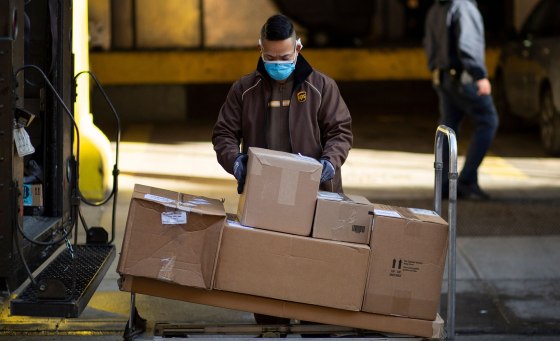Retail sales surged in January to $568.2 billion, snapping a three-month streak of declines. The 5.3 percent increase reported by the Census Bureau Wednesday blew past economists’ consensus of around 1 percent.
The rebound was largely fueled by $600 stimulus payments millions of Americans received as part of the $900 billion bill passed by Congress in the final days of 2020.
“Congressional action has been a lifeline for households and businesses disproportionately impacted by the pandemic,” National Retail Federation president and CEO Matthew Shay said in a statement.
“Obviously, the numbers were great relative to expectations, although I think everyone’s taking it with a grain of salt,” said Lizabeth Dunn, operating partner at Consumer Growth Partners. “Stimulus seems to have played a large part… it’s the money that’s been sent already, the extension of unemployment benefits as well as expectations about future stimulus,” she said.
The other factor contributing to people’s willingness to open their wallets is an increasing sense of optimism as incremental progress is made on vaccine deployment.
“I think probably the pivot point was the distribution of the vaccine,” said Sam Stovall, chief investment strategist at CFRA Research. “People are, in general, feeling more confident that if they have avoided the virus thus far, they will likely avoid the virus in the future,” he said.
"Stimulus seems to have played a large part… the money that’s been sent already, the extension of unemployment benefits, as well as expectations about future stimulus."
Spending was up broadly across sectors, with some seeing double-digit growth as Americans continue to build on the stay-at-home trends that have characterized pandemic consumption.
“That’s a function of people’s lifestyles changing during the pandemic, staying at home, not going to work, not going to the gym — that seems to have continued,” said David Swartz, equity analyst at Morningstar.
Sales at electronic stores rose nearly 15 percent, sales at furniture retailers went up by 12 percent and even department store sales jumped by 23.5 percent on a monthly basis, although this was still down 3 percent compared to January 2020. Stovall speculated this could have been driven in part by people flocking to shopping centers as a substitute for visiting movie theaters, gyms, spas and restaurants.
“I think that consumers are just so tired of being cooped up that even though most people are now doing a lot of their shopping online, I think people just wanted to get out,” he said.
Even with people indulging their cabin fever in January, e-commerce continued to show robust growth as well. The category had an 11 percent monthly increase and a year-on-year jump of nearly 29 percent, the highest of any category tracked by the Census Bureau.
Within this data, analysts can begin to see the contours of what the economic recovery might look like once the worst days of the pandemic are in the rear-view mirror.
The expansion of ecommerce is one change that is likely here to stay, especially because a much broader cross-section of retailers made investments in their digital sales infrastructure over the past year. “The battle with digital adoption had been about just that — adoption,” Dunn said. “As people have shifted spending patterns to something that’s more convenient, I think we’ll hold on to those gains,” she said.
Retailers in certain categories — supermarkets, for instance — had been trying to coax more customers online with mixed results well before the pandemic struck. In a matter of months, Covid-19 accomplished a task on which IT, marketing and customer relations departments expected to spend years working.
“Some of those gains are permanent,” said Nick Shields, senior analyst at Third Bridge. “Certainly, some reversion to the mean is to be expected, but it’s almost as if e-commerce is at 2025 or 2026 levels.”
One promising sign for the beleaguered restaurant industry was a 6.9 percent monthly increase in sales at restaurants and bars. Even if much of that spending is still on to-go orders, it is an indication that customers will be willing to return, especially as the warmer weather makes outdoor dining more feasible in parts of the country.
More broadly, retailers selling goods as opposed to services continue to benefit from a dearth of opportunity for people to spend on experiences. Once these parts of the economy return, though, market observers expect that they will siphon disposable income away from some of the retail categories currently experiencing the biggest increases in spending, such as home goods and exercise equipment.
“From the conversations we’re having, it seems that things like electronics and furniture — that’s really where we can see some share of wallet get stolen from,” Shields said.
Even if the balance of spending shifts once the economy returns to something like normalcy, analysts are optimistic. The high household savings rate indicate that consumers are able to spend. This month’s strong retail sales figures indicate that they’re ready and willing, as well.
“I think there's a lot of pent-up consumer spending that’s going to be unleashed,” Swartz said.
